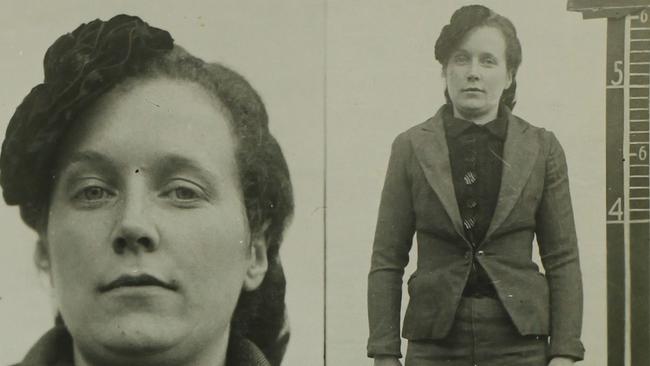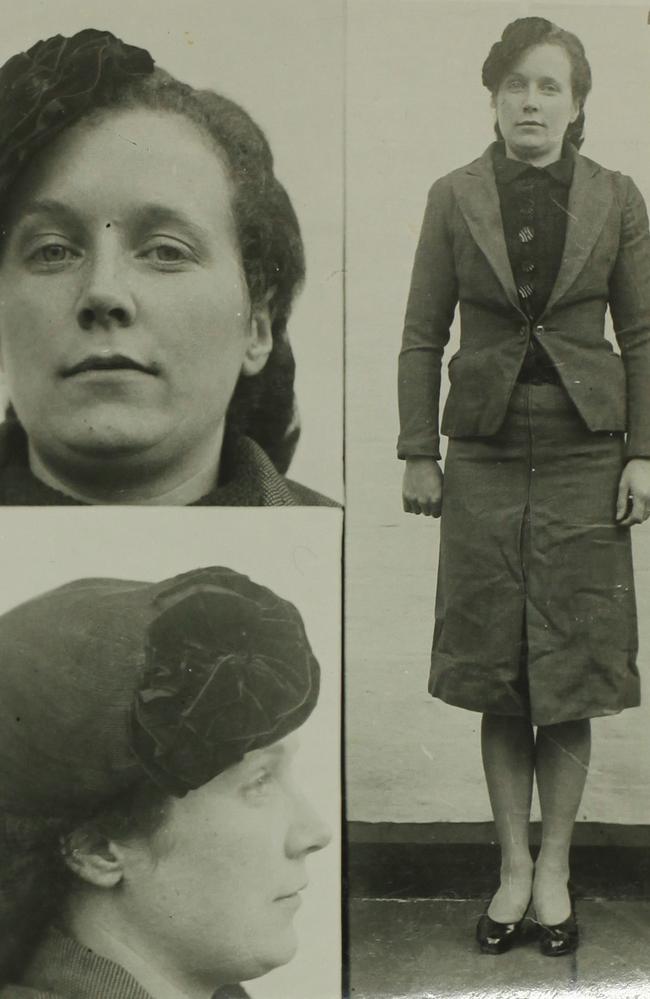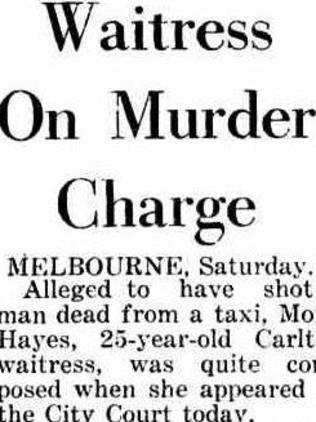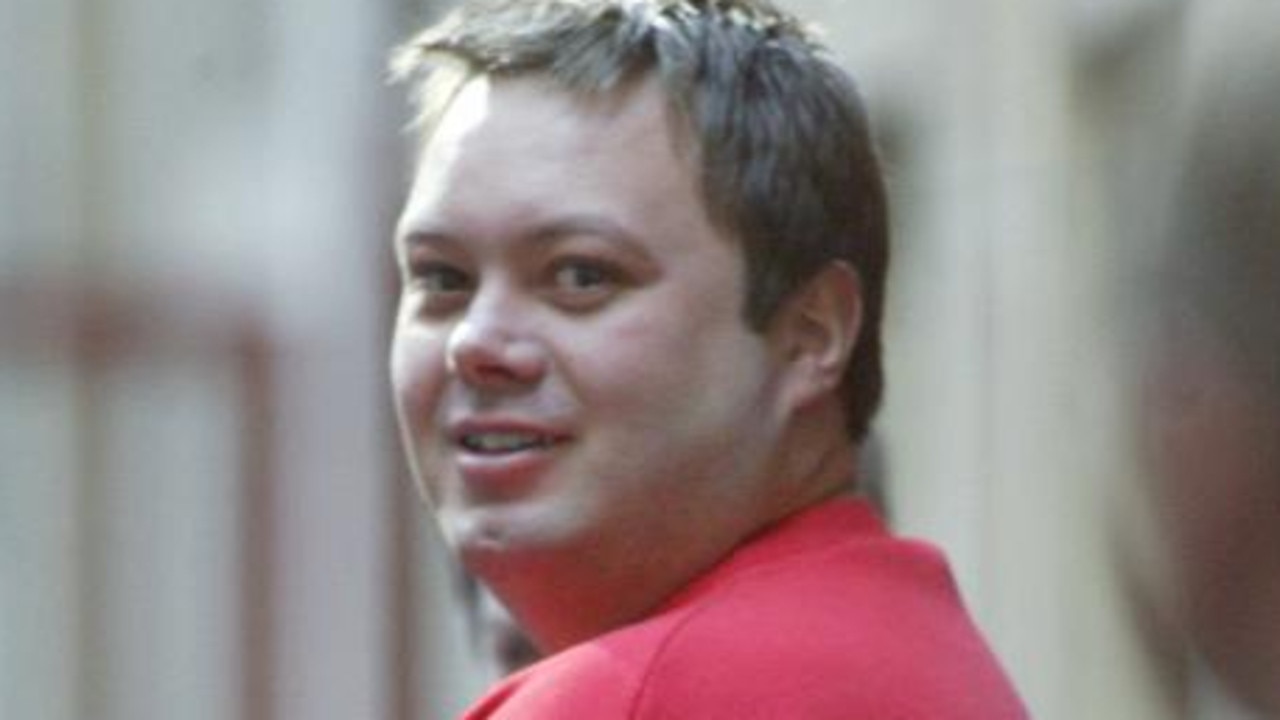Melbourne 1930s crime flashback: Why charming con artist Mona Hayes was driven to kill
SHE was a well-bred thief with a knack for conning strangers. But when words failed her, the attractive young Melbourne lass pulled a gun ...

Our Criminal History
Don't miss out on the headlines from Our Criminal History. Followed categories will be added to My News.
MONA HAYES’ transformation from petty thief to accused murderer was as swift as it was brutal.
It was the 1930s when Hayes gained notoriety as a travelling thief with a string of aliases.
Well-educated and born to a respectable family in Queensland in 1913, Hayes worked as a theatre usher and was known to keep bad company.
“She follows the show season to (Melbourne, Sydney and Brisbane) and is usually accompanied by known cheats and thieves and when business at the show is poor she is used by these people as a decoy for assault and robbery and blackmail,” according to a police department report contained in the state files.
“She is an exceptionally clever thief and she has a very engaging personality. She appears to be able to get strange people to fall over themselves to do something for her.”
The Hayes’ story has come to light with the Public Record Office Victoria’s recent opening of a series of state files.

Hayes, whose family lived in Frankston, had been married but had separated from her husband. She told police that alcohol was behind her criminal career.
It was mid-1937 when Hayes visited a Melbourne jewellery store with Arthur Wilson, aka Arthur Brown.
Wilson — a convicted felon — kept the sale assistants busy as Hayes ran off with two rings.
The pair were quickly arrested.
“I am guilty of both charges I am to appear before you on September 13th,” Hayes wrote to Judge Magennis.
“(B) ut I really am unable to explain what even possessed me to do either of those deeds.
“I can only say that I am more than sorry and I am wondering if you could possibly give me a chance to go straight.
“I will get a position as soon as I am free — if you could find your way clear to release me on a bond ... I never intend to keep bad company again, and I want to go straight.”
Wilson even backed her up, taking the lion’s share of responsibility.
“Whilst I cannot take the sole blame, I realise that what was done was in my interest rather than hers, as she knew I was having a bad time in my business of selling fish around the suburbs,” Wilson wrote to the judge.
“I do not mean that I prompted her to steal but I am convinced that it was on my behalf she did this.”

Judge Magennis took pity on Hayes, finding that she had the ability to be a “very estimable citizen” if she pulled herself together.
“I am quite sure you can do it if you like because you are a young woman who has, I would think, quite a lot of ability and good appearance and if you can just separate yourself perhaps from some of your companions you would make good.”
He released her on a good behaviour bond.
But history shows his faith in her was misplaced.
By the age of 26, in 1939, Hayes, also known as Ruth Norbury, Mona Williams, Lena Williams and Thelma Wilson, had amassed eight convictions in three states in just two years. As well as larceny, Hayes had convictions for unlawful assault, using indecent language in a public place and riotous behaviour.
Just a year after Judge Magennis offered her a lifeline, Hayes tricked a Canterbury jeweller into handing over two watches.
Jeweller Charles Filmore Wayman told police that a woman visited his Canterbury Rd store on November 15, 1938, and had her eyes tested, saying she would return later to put a deposit on some glasses.
She gave him a piece of jet that she said she wanted mounted into a ring before asking to see the ladies watches.
“She selected two and asked if I would let her have them to take away and show her mother than afternoon,” Mr Wayman said.
“She said, ‘I will return the watches when I bring the deposit for the glasses’.
“She said, ‘My mother is an invalid and has to be wheeled in a chair and it is awkward for her to get to the shops’.”
She took the watches and never returned.

Hayes used the same modus operandi when she struck at a jewellers in Burke Rd, Camberwell.
Again, Hayes took two watches to show her “invalid mother” and never returned.
Both jewellers identified Mona Hayes and this time she was not so lucky when she fronted the courts.
She said that it was a case of mistaken identity, claiming she had not been to Camberwell or Canterbury for more than three years.
She was not as lucky as she had been in 1937.
Hayes was sentenced to six months’ jail in 1939.
But it was between the two court appearances that Hayes life was changed forever.
At a South Melbourne party in March, 1938, Hayes had the misfortune to meet Albert Sharpe.
Like the bad company Hayes had kept previously, the 24-year-old had a list of priors including larceny, stealing and housebreaking.
The pair moved in together in Gore St, Fitzroy, and for the first week, Sharpe was a gentle and romantic lover, Perth’s The Mirror newspaper reported in 1939.
After just three weeks Hayes left as a result of domestic violence.
“He assaulted me on several occasions. He knocked me down and kicked me and ill-treated me in every way ... he nearly broke my arms on a couple of occasions. Twisting my arms behind my back.
“Because I would not do what he wanted me to do. He wanted me to go on the streets for an immoral purpose to earn money,” Hayes later said in court.
When she left him, Hayes did not see Sharpe again until after her release from jail in August, 1939.
A series of chance meetings in public were characterised by brutal assaults.


A friend of Sharpe’s, James Henry Lawrence, told police later said that he had seen Hayes run from him several times.
Sharpe had spoken of wanting to see Hayes dead, Mr Lawrence said.
“In King William St, this man tried to get Mona Hayes to go with him,” Mr Lawrence said, according to PROV files.
“She refused to go with him. He assaulted her, he pulled her out of the taxi and gave her a punch in the face.
“I stepped in and tried to stop him, but he went on hitting her. She was knocked to the ground. Someone there picked her up and put her in a cab and drove her away.
“I heard next day she had two black eyes and when I saw her two or three days afterwards she had two black eyes and a split on the forehead.”
Hayes, then living in Drummond St, Carlton, told of her beatings at the hands of Sharpe, who threatened her and pestered her to go and live with him as man and wife.
Tired of the battering she was suffering at the hands of her fair-haired attacker, Hayes got herself a gun.
It was only four days later that she used it.
Hayes was in the George ‘N Cafe in Russell St shortly after 4am on September 15, 1939, when Sharpe arrived with another man and sat at her table.
“Sharpe started to argue with me and said ‘you are not getting out of here, you will come with me’,” Hayes later told police.
She said Sharpe chased her out onto the footpath and started to struggle with her.
She warned him: “If you don’t leave me alone I will shoot you.”
“That will be nothing to what I will do to you,” she told police he replied.
Hayes said she got in a taxi but Sharpe jumped in after her and started to pull her out.
The taxi driver, Ernest Edwards, told police that Sharpe was abusing Hayes and threatened to belt her into the gutter.
“As to whether this man was the aggressor throughout, my impression was that if the man had let her alone she would have driven away,” Mr Edwards said.
The Mirror reported that Sharpe viciously kicked Hayes in the stomach.
One witness, Berktash Maliq, a friend of Hayes who was also in the cab, told police the pair argued for five minutes, Hayes pleading with Sharpe to let her go as he tried to pull at her.
He was half in and half out of the cab when she shot him.
“I heard the shot, the man grabbed his stomach and staggered toward the door of the cafe, she said to the driver as soon as the shot was fired, ‘Drive away’,” Mr Maliq said.
Hayes ran off down Lonsdale St, discarding the pistol, as Sharpe lay dying on the footpath.
“He was a maniac,” The Mirror quoted Hayes as telling the court.
“He pulled me by the hair. He kicked me in the stomach. I couldn’t stand it any longer. I was certain he was going to carry out his threat, and finish me. I don’t know how I did it, but I fired the shot.”
In a coroner’s report contained in the PROV files, Albert Sharpe was found to have “died from the effects of a bullet wound in the abdomen wilfully and maliciously inflicted that day at Russell St, Melbourne, in Victoria by one Mona Hayes and I further say that in the manner aforesaid the said Mona Hayes murdered the said Albert Sharpe”.
It led to what media described as one of the shortest trials in Victoria’s criminal history.
Hayes was swiftly acquitted of murder. The jury also found her not guilty of manslaughter.
“With his death was lifted the horrible shadow of a brutal thug, a man who bashed this woman whenever he could because she refused to earn money for him in this way,” The Mirror reported.
————————
Special thanks to the Public Record Office Victoria www.prov.vic.gov.au for additional research for this article.
Originally published as Melbourne 1930s crime flashback: Why charming con artist Mona Hayes was driven to kill


